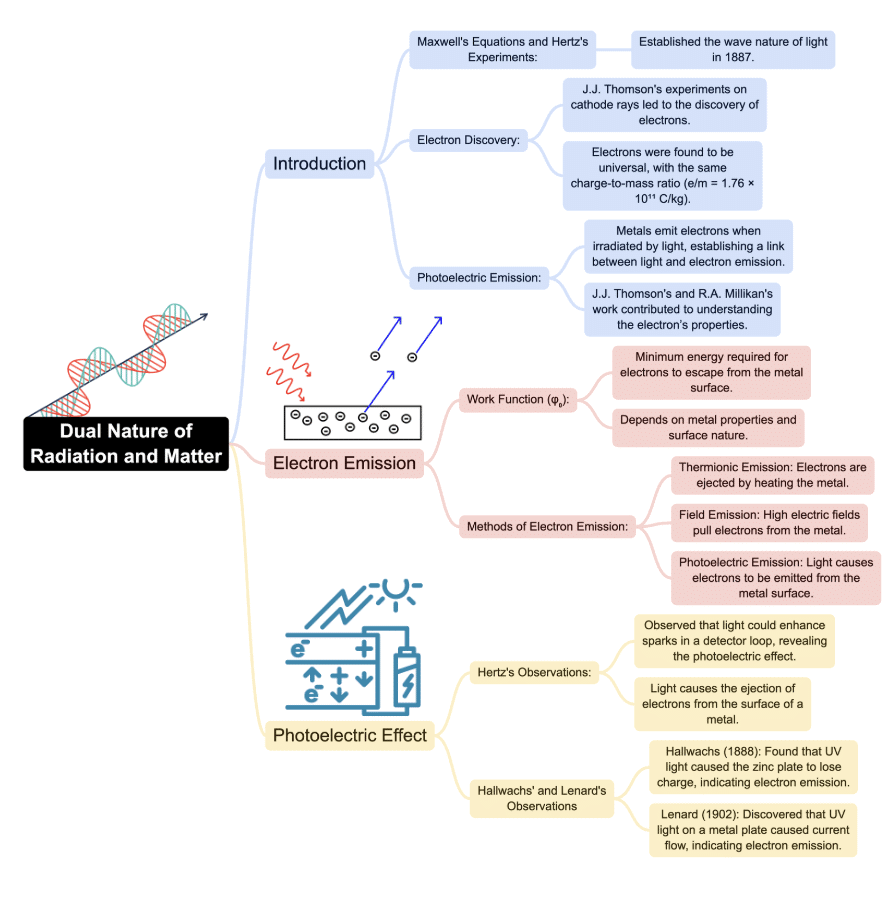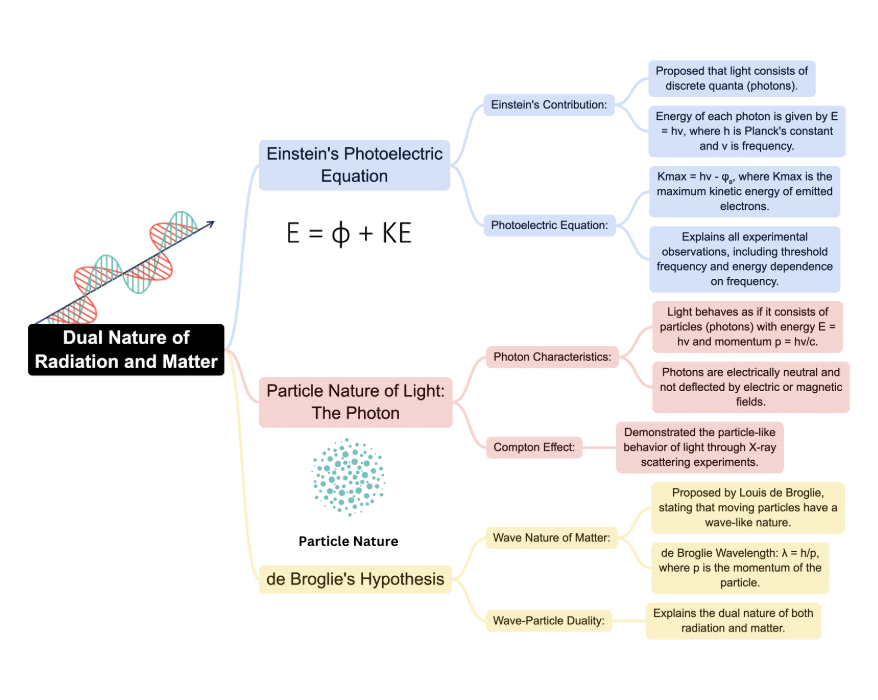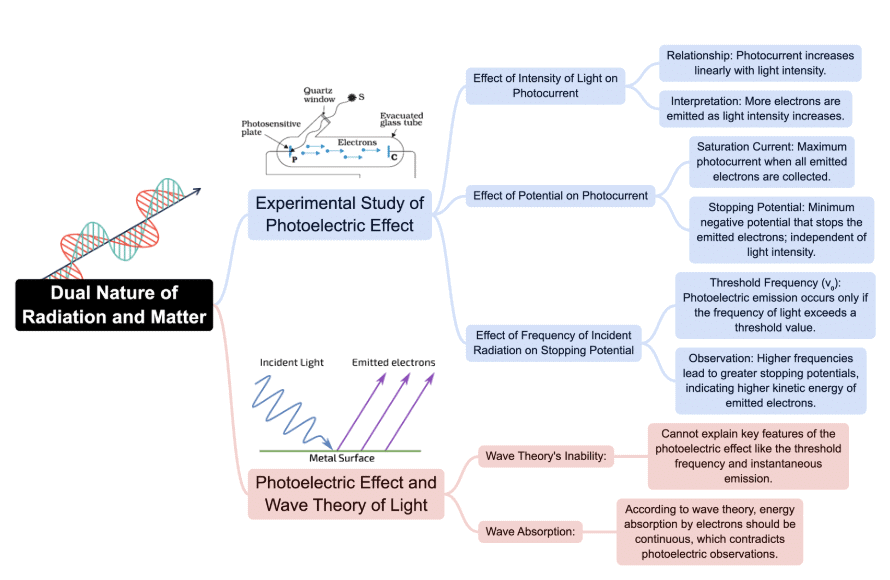JEE Exam > JEE Notes > Physics for JEE Main & Advanced > Mind Map: Dual Nature of Radiation and Matter
Mind Map: Dual Nature of Radiation and Matter | Physics for JEE Main & Advanced PDF Download



The document Mind Map: Dual Nature of Radiation and Matter | Physics for JEE Main & Advanced is a part of the JEE Course Physics for JEE Main & Advanced.
All you need of JEE at this link: JEE
|
297 videos|953 docs|172 tests
|
FAQs on Mind Map: Dual Nature of Radiation and Matter - Physics for JEE Main & Advanced
| 1. What is the dual nature of radiation and matter? |  |
Ans. The dual nature of radiation and matter refers to the fact that both particles and waves exhibit characteristics of both particles and waves. Radiation can exhibit wave-like properties, such as interference and diffraction, as well as particle-like properties, such as the ability to interact with matter and be detected as discrete particles.
| 2. What is the significance of the dual nature of radiation and matter in the field of physics? |  |
Ans. The dual nature of radiation and matter is of great significance in the field of physics as it helps explain various phenomena. It helps us understand the behavior of light, which can act as both a wave and a particle, leading to discoveries in optics and quantum mechanics. It also explains the behavior of subatomic particles, such as electrons, which exhibit wave-like properties in experiments like electron diffraction.
| 3. How does the dual nature of radiation and matter relate to the photoelectric effect? |  |
Ans. The dual nature of radiation and matter is directly related to the photoelectric effect. The photoelectric effect is the emission of electrons from a metal surface when light of a certain frequency (or energy) is incident upon it. This phenomenon can only be explained by considering light as a stream of particles (photons) with specific energies. The energy of the photons determines whether they can overcome the work function of the metal and eject electrons. This supports the particle-like nature of light.
| 4. Can you provide an example of an experiment that demonstrates the dual nature of radiation and matter? |  |
Ans. One example of an experiment that demonstrates the dual nature of radiation and matter is the double-slit experiment. In this experiment, a beam of particles (e.g., electrons) or waves (e.g., light) is directed towards two parallel slits. The particles or waves pass through the slits and create an interference pattern on a screen behind them. This pattern can only be explained by considering the particles or waves as having wave-like properties, such as diffraction and interference.
| 5. How does the dual nature of radiation and matter impact our understanding of quantum mechanics? |  |
Ans. The dual nature of radiation and matter forms the foundation of quantum mechanics. It helps explain the behavior of particles at the microscopic level, where classical physics fails to provide accurate predictions. Quantum mechanics describes particles and their interactions in terms of probabilities and wave functions. The dual nature of radiation and matter allows us to understand phenomena like particle-wave duality, particle tunneling, and wave-particle interference, which are fundamental to quantum mechanics.
Related Searches





















